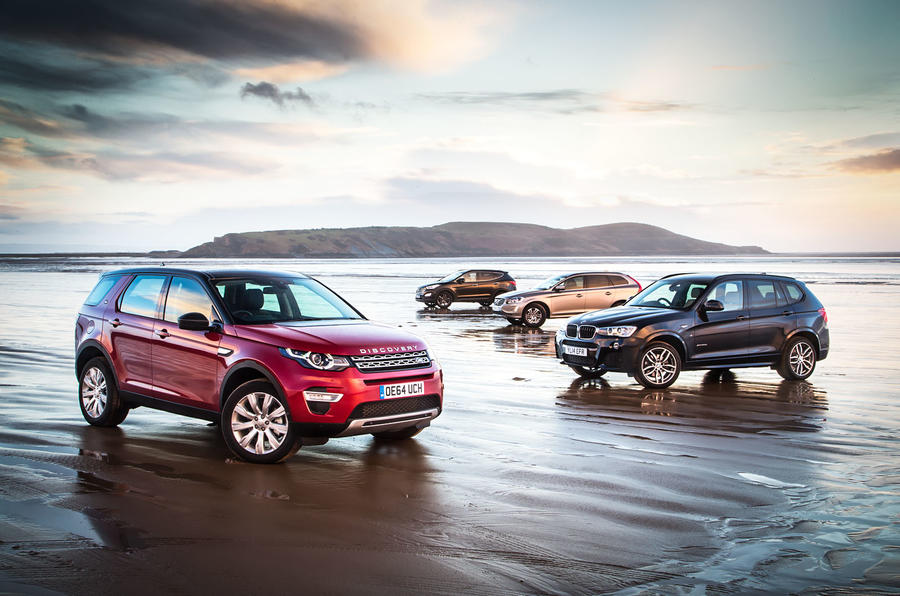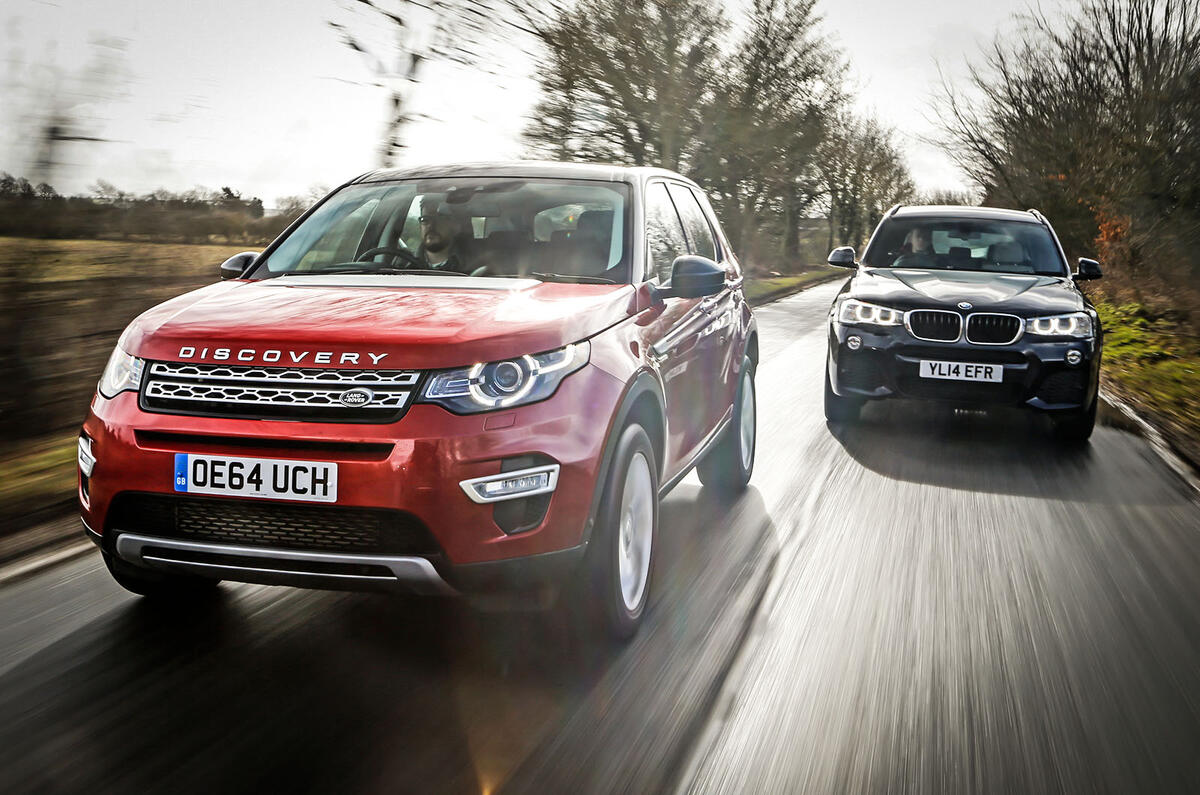Hmmm, I don’t like the Land Rover Discovery Sport. That, at least, is all that occupies my mind for the first 30 minutes behind the wheel.
This is supposed to be a new take on the Freelander, yet I’m confronted with an interior that looks and feels five years old. This pre-dated feel is reinforced with every turn of the four-cylinder diesel engine’s crankshaft, too, its coarse nature betraying the fact that it is actually five years old. And all of this, I idly muse, even though this is the newest and one of the more expensive options in its class.
After all, when you’re attempting to muscle in on a market occupied by the likes of the BMW X3 – frequently regarded as one of the best mid-sized SUVs on sale – then you really need to push the boat out. Your car needs to be competitive in every aspect, if not exceptionally so, and offer several additional facets of reward in order to topple such heady competition.
The Discovery Sport doesn’t face competition just from Germany, however. These days, every manufacturer is in on the SUV game, exploiting what has rapidly developed into an incredibly lucrative sector. So, in order to find out whether the Land Rover really has what it takes to justify a place on your drive, we’re pitching it at a broad spectrum of alternatives.
First to join the Discovery Sport just outside Swindon, prior to a cross-country trek that will put several hundred miles on the odometers of all here, is the Volvo XC60. It packs Volvo’s frugal new D4 engine, which isn’t offered with four-wheel drive yet, and is a quietly appealing car. It’s also one that, in most cases, wouldn’t appear out of place parked nose to nose with the new Land Rover in the high-end residential areas frequently occupied by these cars.
Read the full Land Rover Discovery Sport review
Next into the starting blocks is the Hyundai Santa Fe. Like the Land Rover, it sports a diesel engine, four-wheel drive and seven seats. It may not have the badge or the off-road credentials, but what it majors on is value for money and ease of use.
Lastly, the main threat – the five-seat, four-wheel-drive X3 – rolls in. It’s this that the Land Rover will have to work hardest to overcome, but that’s not to say the other cars here are completely outgunned.
However, it’s immediately apparent that the Land Rover is the one getting the most attention. Although I’m not personally sold on the ‘inflated Evoque’ looks and the somewhat brash ‘Discovery’ badge on the nose, the Land Rover is unquestionably the most interesting to look at.
























































Join the debate
Add your comment
Really interesting
Great stuff Autocar, it really brings these reviews to life.
Keep it up guys.
Interesting review too, I don't really agree with the outcome from a personal point of view (and for what I'd want out of one of these cars), but in terms of real world sales figures, it's probably spot on.
Hi Lewis, first, very good of
Regarding the test results, I appreciate you will always get people questioning/moaning about results. It comes with the territory I guess. But in this case, going strictly by the points made in the article itself, the points in favour of the BMW do seem to stack up quite a bit more than the Discovery Sport, as I pointed out in my original comment.
So, it was a bit of a surprise to read that the latter pulled out the win. And that's why, rightly or wrongly, the impression of subjective preference is created. But hey, that's just my personal opinion, which I accept is just as fallible as anyone else's.
Comments deleted?
I, and I believe one or two other posters, posted comments here that Autocar's own findings in this test didn't really make the case for concluding the Discovery Sport winning, particularly over the X3, at least objectively and that this is indicative of the magazine often giving JLR cars favourable write ups.
But the comments have suddenly disappeared! Surely this can't be because this fine and long standing publication is intolerant of different and sometime opposing viewpoints, can it?
RE: Comments
Hello Overdrive. I'm not aware of any comments being deleted (I've not removed any, at least, as it usually takes a load of other interesting replies with it). You may well find that they've been bumped onto the second or third page though; responses push following messages down one.
If you get the opportunity to drive a Discovery Sport, if you haven't already, do let us know what you make of it. Always interested to hear what the readers think.
I do recall a time when we ran a group test and received precisely one letter apiece for each car involved claiming that, in fact, it should have been the true victor. Swings and roundabouts. Rest assured that there is no favouritism here. I wouldn't want to waste your time.